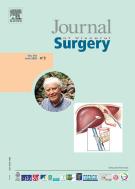Mobilization of the splenic flexure in laparoscopic colorectal surgery: Why and how? - 03/04/25
 , Kamel Bentabak a, b
, Kamel Bentabak a, bRésumé |
Key points |
• | The usefulness of systematic mobilization of the splenic flexure during colorectal surgery has not been demonstrated. |
• | Complete mobilization of the splenic flexure allows a gain of up to 28 cm of colonic length. |
• | The laparoscopic technique of splenic flexure mobilization can either be performed from outside-in via an anterior or lateral approach or from inside-out from a medial approach. |
• | Pre-operative imaging allows the surgeon to anticipate and plan the intervention by analyzing the position of the splenic flexure, the length of the sigmoid colon, the depth of the pelvis, and the anatomy of the vascularization. |
• | Splenic flexure mobilization can be performed via robotic surgery with specificities linked to patient positioning and to the docking of the robot. |
Summary |
Whether or not to mobilize the splenic flexure during laparoscopic colorectal surgery remains a subject of debate. Its usefulness in decreasing the rate of anastomotic leak has not been demonstrated. The difficulty of performing splenic flexure mobilization via laparoscopy and the increase in operative duration are its principal drawbacks. The splenic flexure is an anatomic threshhold zone with complex anatomy, particularly with numerous vascular variations. The laparoscopic approach to splenic flexure mobilization must take into account the embryologic planes while respecting its vascular supply. From the technical standpoint, laparoscopic splenic flexure mobilization can proceed from outside-in by a lateral or anterior approach or from inside-out by a medial approach immediately following the vascular transection. Splenic flexure mobilization can result in an average gain in length of 28cm (extremes: 10–65cm) as demonstrated by cadaver dissections, and allows a tension-free anastomosis in every case. The impact of splenic flexure mobilization on the rate of anastomotic leak has shown discordant results. Meta-analyses based on retrospective studies have not shown beneficial effects of SF mobilization. The only available randomized study demonstrated a statistically significant decrease of anastomotic leak in favor of SF mobilization (9.6% versus 17.9%, P=0.04). Operative duration is prolonged by at least 30minutes, a statistically significant difference, in most studies, but without a significant impact on the rate of conversion to laparotomy or on the global rates of morbidity and mortality. Pre-operative imaging can allow the surgeon to better plan the procedure while predicting potential operative difficulties. In the future, robotic surgery should permit safe SF mobilization thanks to improved vision and more stable exposure.
Le texte complet de cet article est disponible en PDF.Keywords : Left colic angle, Splenic flexure, Laparoscopy, colorectal
Plan
Bienvenue sur EM-consulte, la référence des professionnels de santé.
L’accès au texte intégral de cet article nécessite un abonnement.
Déjà abonné à cette revue ?

